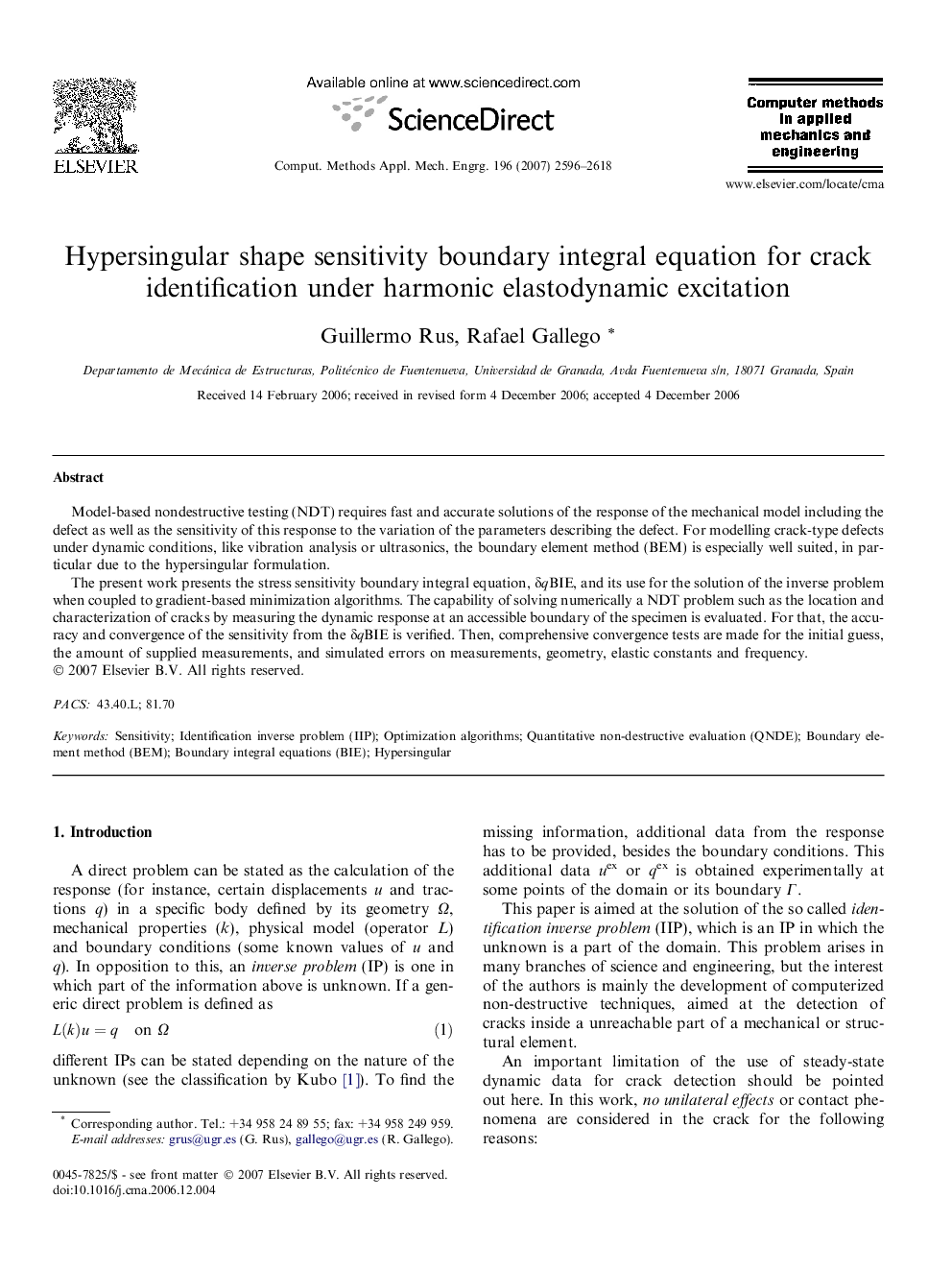| Article ID | Journal | Published Year | Pages | File Type |
|---|---|---|---|---|
| 500204 | Computer Methods in Applied Mechanics and Engineering | 2007 | 23 Pages |
Model-based nondestructive testing (NDT) requires fast and accurate solutions of the response of the mechanical model including the defect as well as the sensitivity of this response to the variation of the parameters describing the defect. For modelling crack-type defects under dynamic conditions, like vibration analysis or ultrasonics, the boundary element method (BEM) is especially well suited, in particular due to the hypersingular formulation.The present work presents the stress sensitivity boundary integral equation, δqδqBIE, and its use for the solution of the inverse problem when coupled to gradient-based minimization algorithms. The capability of solving numerically a NDT problem such as the location and characterization of cracks by measuring the dynamic response at an accessible boundary of the specimen is evaluated. For that, the accuracy and convergence of the sensitivity from the δqδqBIE is verified. Then, comprehensive convergence tests are made for the initial guess, the amount of supplied measurements, and simulated errors on measurements, geometry, elastic constants and frequency.
